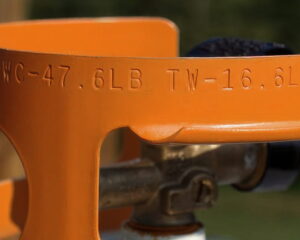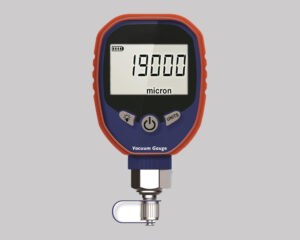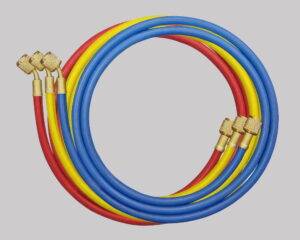Vacuum pumps face a silent battle against condensable gases like water vapor, which threaten performance and longevity. Gas ballast technology provides an elegant solution, balancing physics and practicality to keep pumps running smoothly. Let’s explore the function and principle of gas ballasting at a professional level, find out how this feature works and why it’s indispensable for industrial applications.
The Challenge of Condensable Gases
When a vacuum pump operates, the gas it removes often contains a mix of condensable gases (like water vapor) and non-condensable gases. Compression can push condensable gases past their saturation point, turning into liquid and mixing with the pump oil. For example, water vapor at 20°C condenses at 23 mbar. In a pump compressing to 1,000 mbar, this causes:
Reduced Pump Performance:
Accumulated condensates lower the pump’s ultimate vacuum and pumping speed over time.
Oil Contamination:
Higher humidity in the pumped gas contaminates the pump oil, affecting its ability to seal, lubricate, and cool the system. Condensed liquid mixes with lubricating oil, reducing its viscosity by up to 40% within 100 operating hours.
Increased Maintenance:
Frequent oil replacements become necessary, raising operational costs.
The Principle of Gas Ballasting

Gas ballast introduces dry air during compression to shift the vapor’s partial pressure below its saturation point. Here’s the step-by-step process:
Intake Phase (a→b)
Pump draws gas at intake pressure Pᵥ (e.g., 10 mbar).
Temperature remains near ambient (20–40°C).
Pre-Compression (b→b’)
Gas undergoes initial compression (e.g., 10 mbar → 30 mbar).
Ballast valve opens, injecting 5–10% dry air relative to pump displacement.
Dilution Phase (b’→c’)
Added air increases total pressure while lowering vapor concentration.
Example: Water vapor partial pressure drops from 23 mbar to 18 mbar, staying above dew point.
Final Compression (c’→f)
Mixture compresses to exhaust pressure (1,013 mbar) without condensation.
All gases exit as vapor through exhaust valve.
Without Gas Ballast:
The gas is compressed to its saturation pressure PST, leading to liquefaction (“cd”).
Further compression causes a sudden pressure increase to PT2, expelling the liquid into the oil tank and contaminating the pump oil.
Limitations of Gas Ballast
While gas ballast is highly effective, it has some limitations:
Reduced Pumping Speed and Ultimate Vacuum:
The introduction of dry air lowers the pump’s ultimate pressure.
Solution: Once most vapor is removed, close the gas ballast valve and continue running the pump to achieve the maximum ultimate vacuum.
Inefficient Removal of Oil-Soluble Vapors:
Some Silicone-based vapors dissolve in the pump oil and may not be fully removed by gas ballasting, potentially affecting system performance.
- Solution: Install a cold trap (-50°C) upstream to condense vapors before they enter the pump.
The Overlooked Advantage: Self-Cleaning of Vacuum Oil
A vacuum pump with a gas ballast valve offers an added advantage: self-purification of pump oil.
When the pump oil becomes contaminated with condensate, sealing the pump inlet and opening the gas ballast valve allows the pump to operate under vacuum.
This process removes contaminants from the oil, restoring its original performance and extending its lifespan.

Key Takeaways
Gas ballast is a vital feature in vacuum pumps, offering several benefits:
Prevents Vapor Condensation: By introducing dry air, it keeps vapors in their gaseous state, avoiding contamination of the pump oil.
Improves Pump Efficiency: It maintains stable pressure and prevents performance degradation caused by condensable gases.
Extends Oil Life: The self-purification process reduces the need for frequent oil changes, lowering maintenance costs.
While gas ballast has some limitations, its advantages make it an indispensable tool for maintaining the performance and reliability of vacuum pumps in demanding applications.
- Coolink: TOP 3 Global HVAC Vacuum Pump Manufacturer
- Elitevak: Quality Industrial Vacuum Pump Supplier from China






